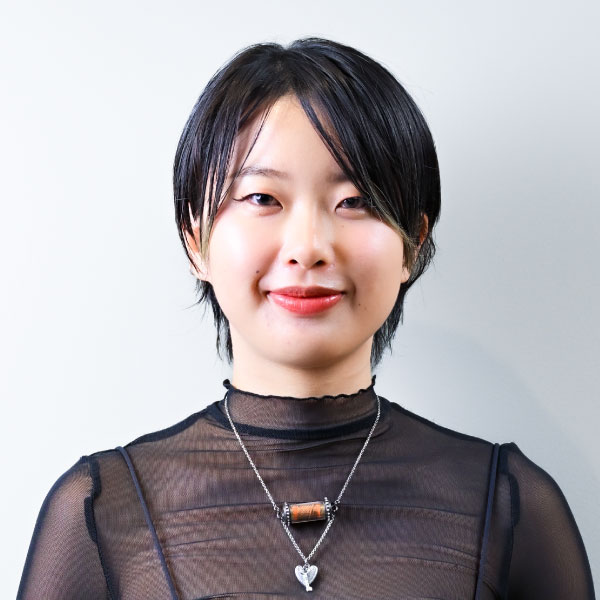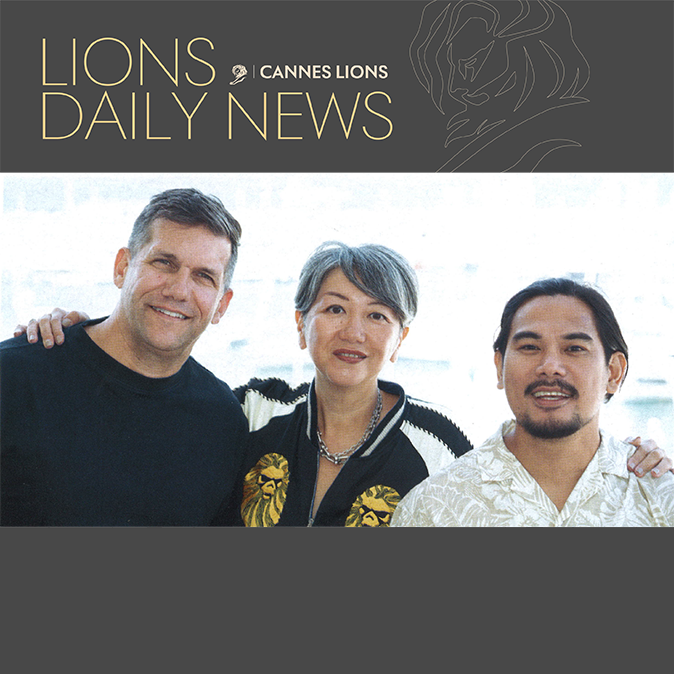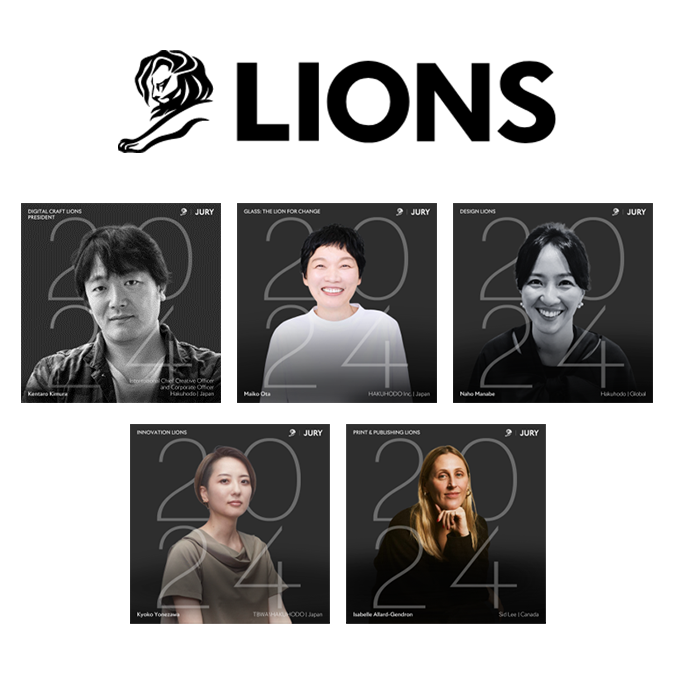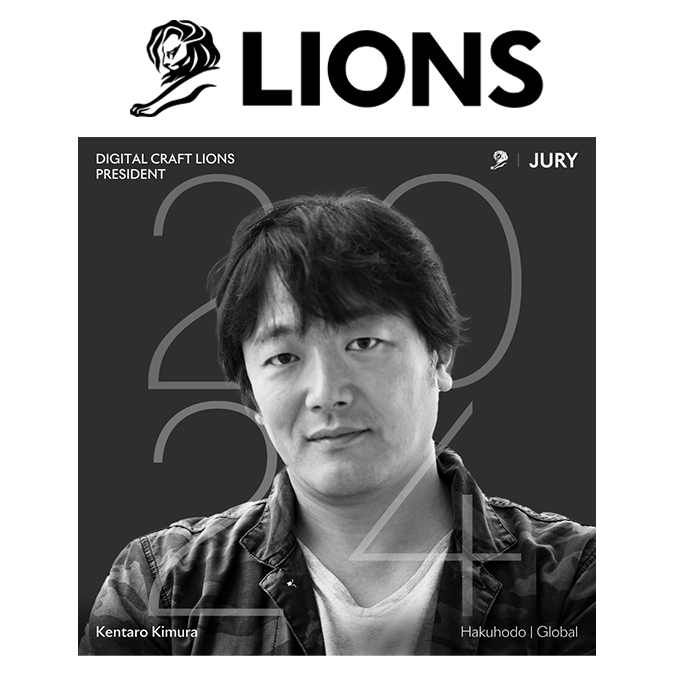- Events
- Viewpoints
- Awards
Interview with Hakuhodo’s Young Lions winners
What does it take to produce world-class insights and creative output?
Hakuhodo copywriter Seri Morikawa and designer Hinako Kawai won Silver in the Young Lions Competitions in Cannes in June 2024 after bagging Gold at the qualifier in Japan. The Young Lions Competitions, for young creatives aged 30 or under, are held annually as part of the Cannes Lions International Festival of Creativity, the world’s largest celebration of advertising. Here the two winners recount how they came up with their world-beating idea and what elements of it were rated most highly.
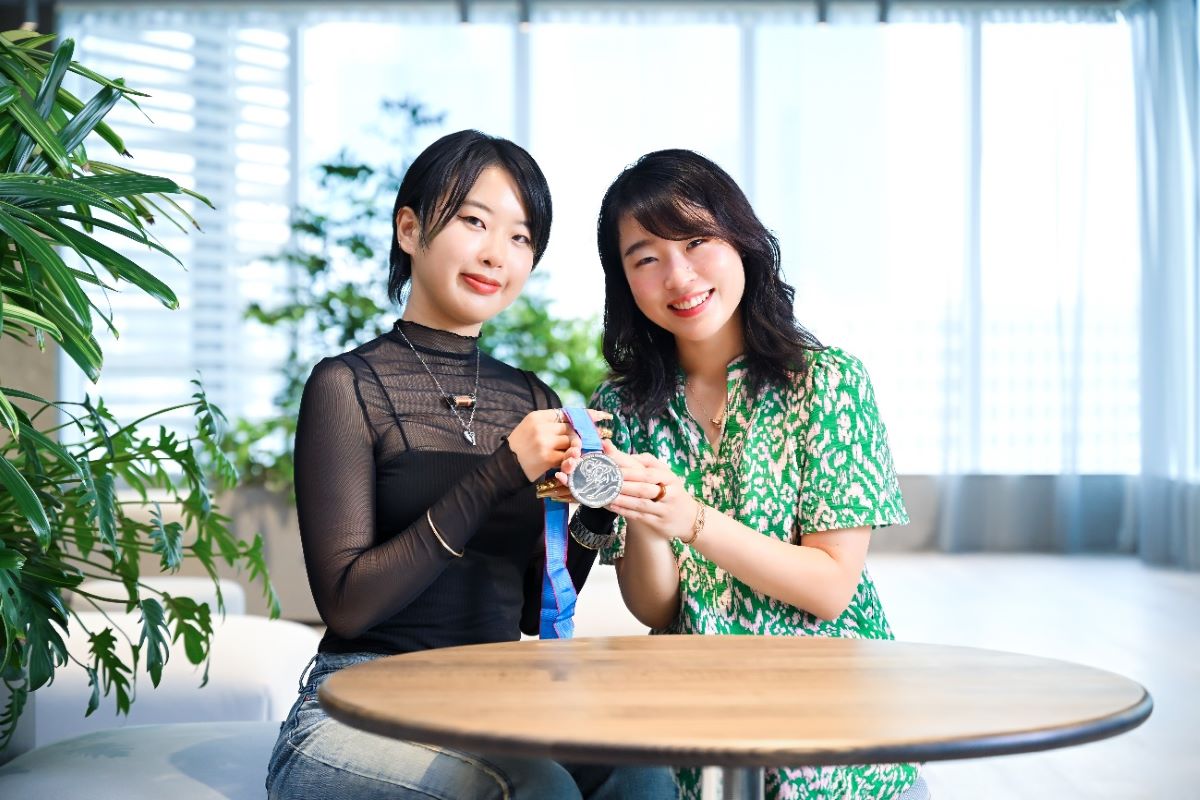 Hinako Kawai (left) and Seri Morikawa
Hinako Kawai (left) and Seri Morikawa
We fist-pumped when the brief was unveiled. It was right up our alley
MORIKAWA: We entered the Media Competition, where the brief focused on the issue of so-called masculinity. The client was the Unstereotype Alliance, an arm of UN Women that focuses on eradicating harmful stereotypes spread by advertising media. Everywhere you look, there are cookie-cutter stereotypes of the ideal male and their success stories. The hypothesis was that it should be possible to build a society where everyone feels at home, even if you’re not a guy, by getting out a message celebrating different lifestyles. The brief was to figure out what advertising media strategy would be most effective in achieving that outcome.
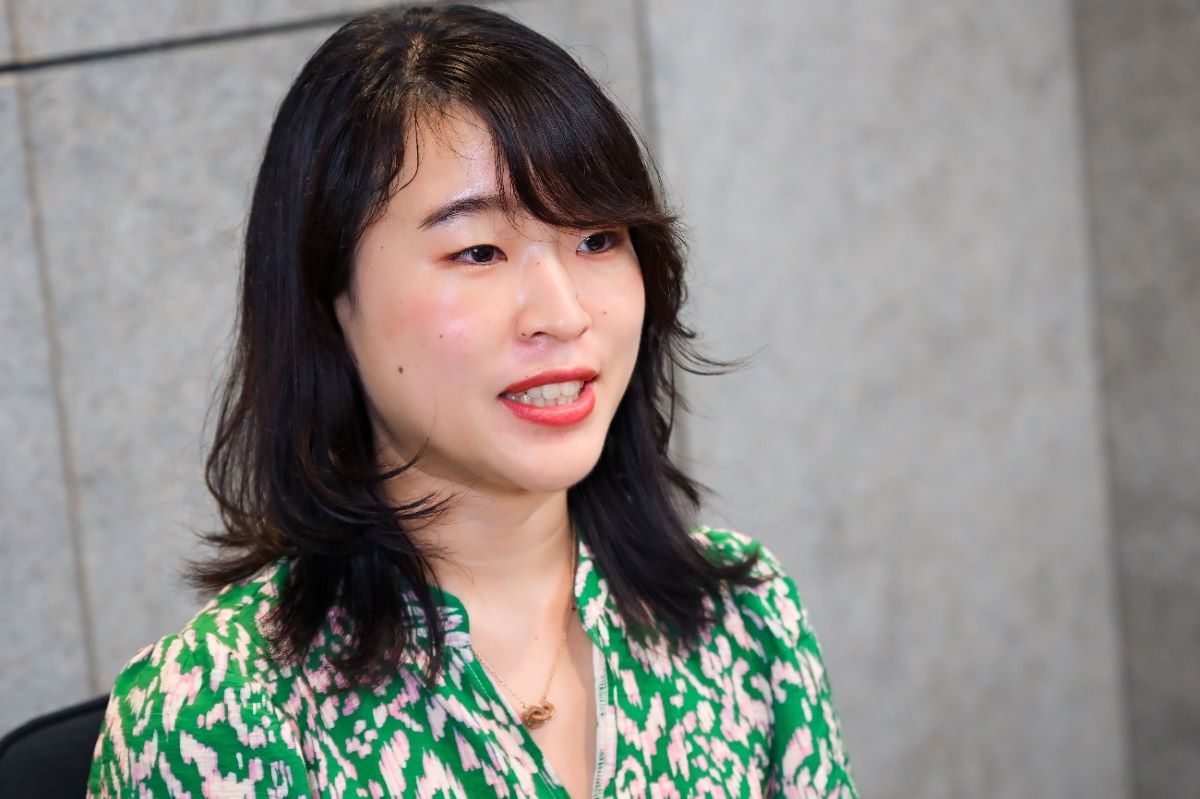
KAWAI: For starters, we felt that UN Women putting the spotlight on men was a new twist. They’d never done it before. And the two of us have long been interested in eliminating stereotypes, so as soon as the briefing ended, we were both so delighted that we fist-pumped in unison.
This was the timeline. The brief was announced at the briefing at 4 pm, and the deadline for submitting documentation was 5:45 pm the next day. Then we had to present our idea to the jury the day after that. As soon as we got the brief, we headed straight to the house the company had arranged for us and set to work.
As for who did what, we both worked together on coming up with an idea, making the slides, and plotting the story. Then Seri handled the copy for the slides, while I drew the key visuals and organized the slide deck.
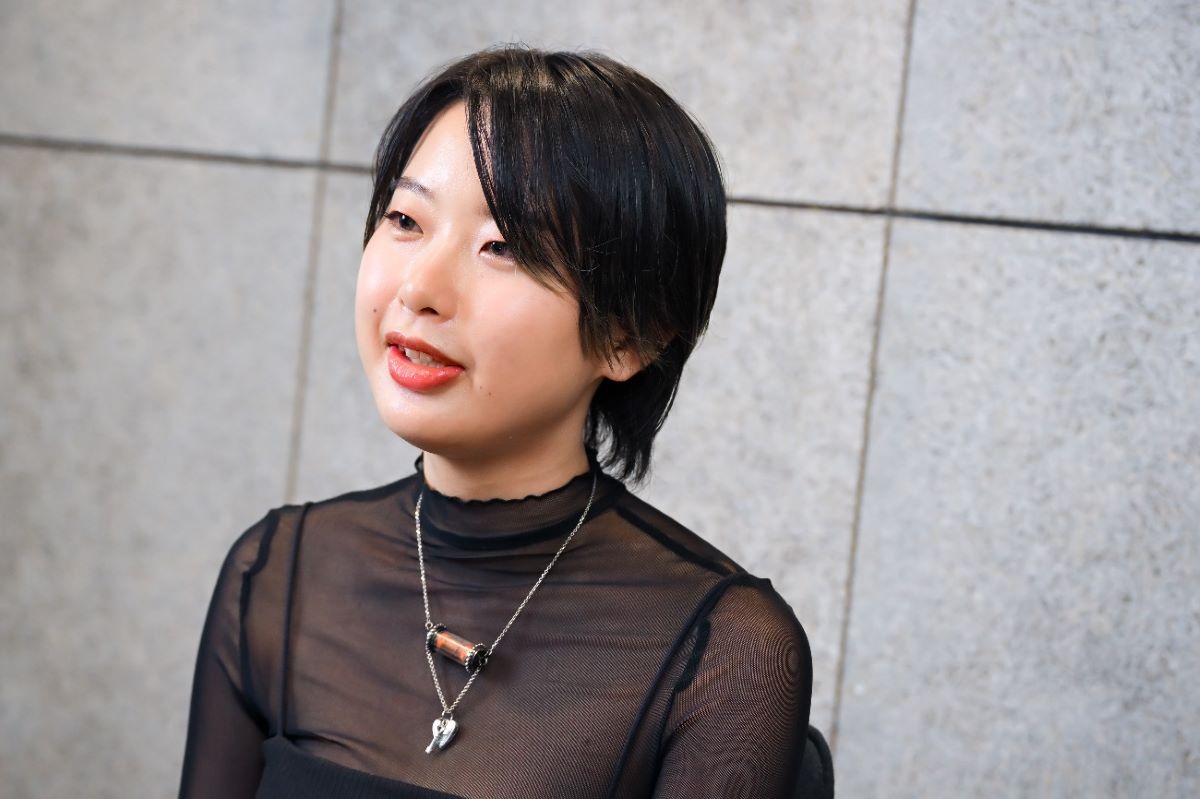
MORIKAWA: We usually spend the first hour and a half looking for interesting facts and points of view, then the next hour discussing them. We generally hit on a cool yet meaty idea after going through that process twice. The two of us have entered several awards contests in the past, and having done four or five mock practice sessions, we were pretty confident in our method. But we figured that wouldn’t be adequate this time, so we decided to keep honing our idea for as long as we could.
KAWAI: In the PR competition, for example, execution is considered just as important as a substantive idea. You’re judged on everything up to how you’re going to ensure your idea takes root. In the Media Competition, by contrast, your insight, your strategy, and your idea determine four-fifths of your score. You’re judged primarily on how interesting your insight is, how compelling the logic of your media strategy is, and whether you can come up with a core idea that sets off fireworks. That, then, is what we consciously devoted our time to, but it was a real struggle. The story finally gelled at about two in the morning.
A chance occurrence gave us the insight we needed
MORIKAWA: We were cudgeling our brains desperately trying to come up with a killer idea, when a chance occurrence broke the impasse [laughs].
KAWAI: That’s right [laughs]. We’d been working away for several hours and found ourselves completely stuck, when Seri went to take a shower for a change of pace. Then she suddenly came running out of the shower, soaking wet, and started going on about everything she’d thought of. It was such a striking spectacle that I had to burst out laughing. We’ve been friends since our student days.
MORIKAWA: My towel barely concealed anything, and Hinako laughed at me for showing too much skin [laughs]. But I was so eager to share the ideas I had in my mind that I couldn’t care less about appearances [laughs]. The two of us laughed our heads off, and in an instant the tension that had been in the air was gone.
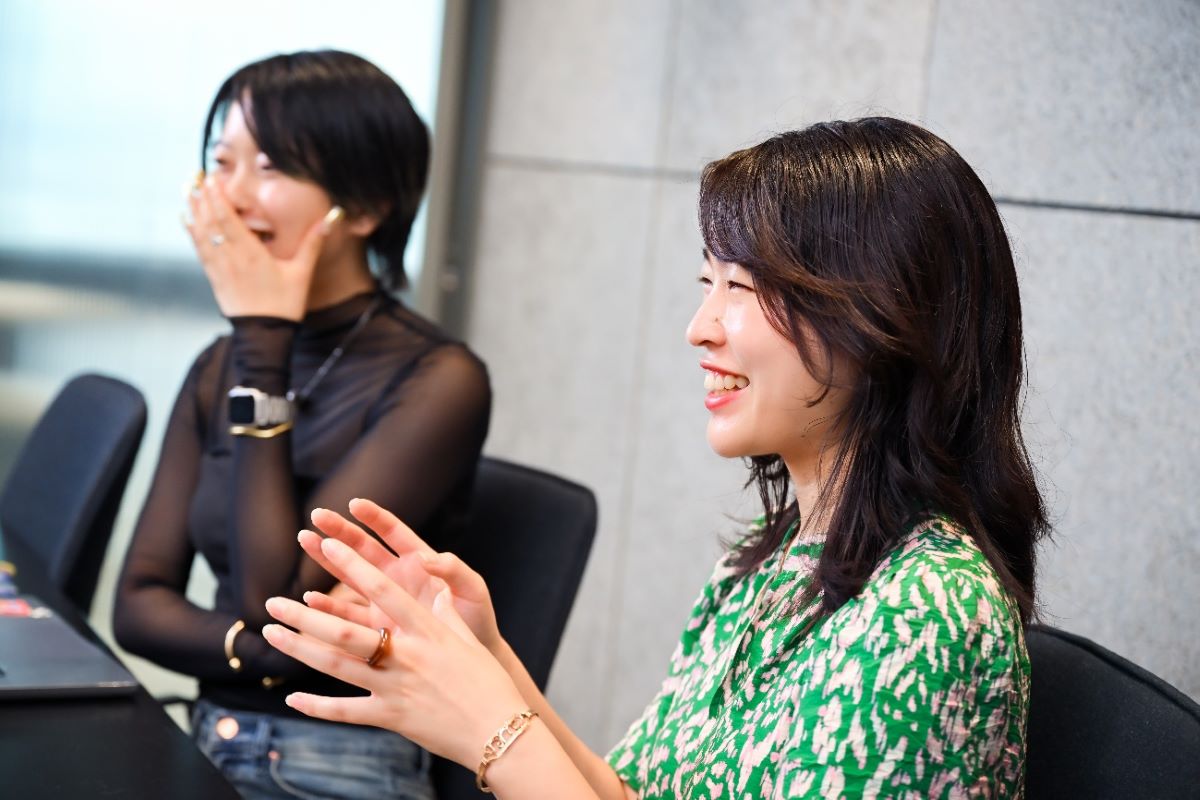
KAWAI: The subject then arose of how being partners made us willing to reveal so much of ourselves. And that’s when we had our insight: “Lovers can witness men’s authentic moments.” Our proposal quickly came together from there.
MORIKAWA: The title of the proposal we ended up submitting was “Spread Spoiled Guys.” Guys always act so cool, so the idea was to get their girlfriends to sneak photos of them at unguarded moments and post them on social media. These motley images of the human male would then be spread in the form of user-generated content. The sofas, coffee cups, gadgets, and other items shown in the photos would be tagged, so companies and brands could reuse the images for advertising purposes. Say you’re a furniture manufacturer, for example. Getting people to relax contently on your furniture without a care in the world must be your primary goal as a brand. With our idea, images of guys doing just that would be shared in the form of authentic user-generated content rather than emanating from the media. We thought that would be a really effective technique for brands.
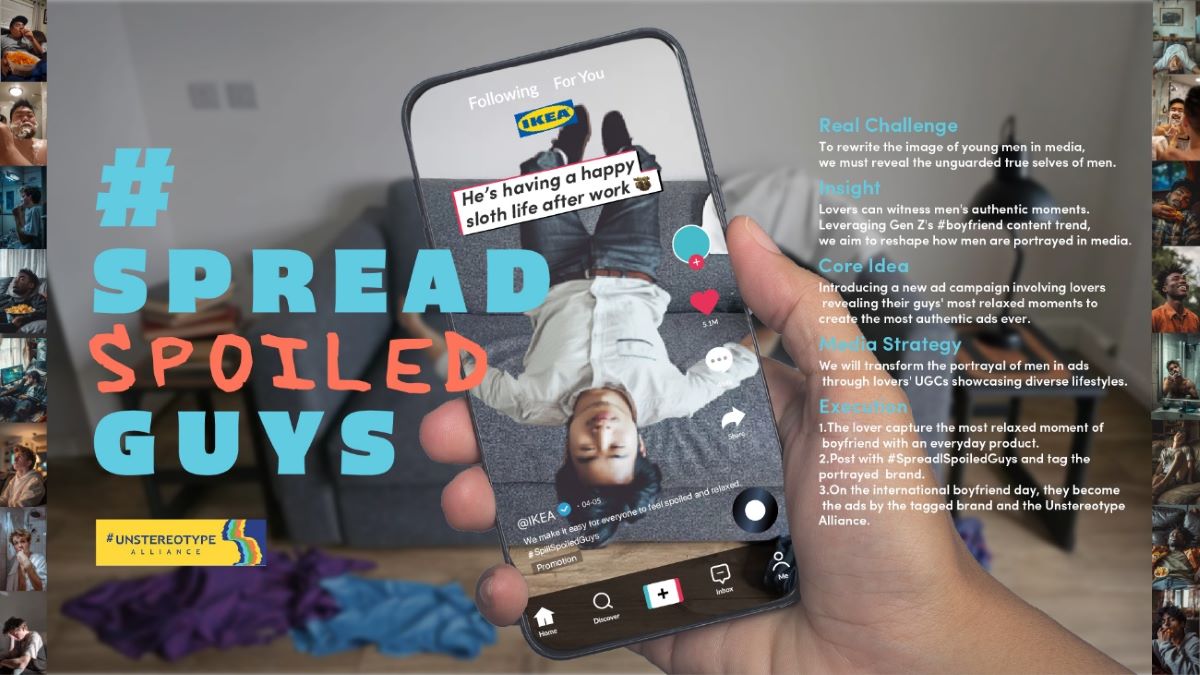
There’s this notion that getting ahead in the world and making money are the hallmarks of the successful male, but in fact there are lots of men who don’t conform to that stereotype. For them, happiness lies in the contentment of leading a decent life, which is the ideal they strive for. So we thought to ourselves, instead of disseminating this monolithic ideal of manhood from the top down, maybe the opposite could work. Take a bottom-up approach. Spread user-generated content showing the real lifestyles of actual men you find anywhere and how they find bliss.
KAWAI: Another thing: the given target audience was Gen Z, and during our research, we discovered that there’s a new social media trend among Gen Zers outside Japan. They post photos they’ve taken of their boyfriend’s everyday lives with the hashtag “my boyfriend doing such and such.” We figured that if there’s a movement already out there, we could give it social meaning as a way to build a future where everyone belongs. That would serve as a catalyst for getting more young people involved.
MORIKAWA: While the client was UN Women, the focus was on stereotypes of masculinity. And that was the rub. This issue can’t be solved by either men or women alone. They both need to tackle it together. That’s why inclusivity was always uppermost in our minds: you know, we all need to bring about change together.
Presentations weren’t rated on English fluency but ability to engage people
KAWAI: What we got the highest marks for was, I think, our insight. The judges commented that we had the most unique, powerful insight of all the teams. So why did we fail to win the Gold? It must have been because we should have done a better job of refining the execution. After all, the proposal that ultimately clinched the Gold involved a simple idea, but the execution was thought out in great detail. That’s a lesson we intend to apply in the future.
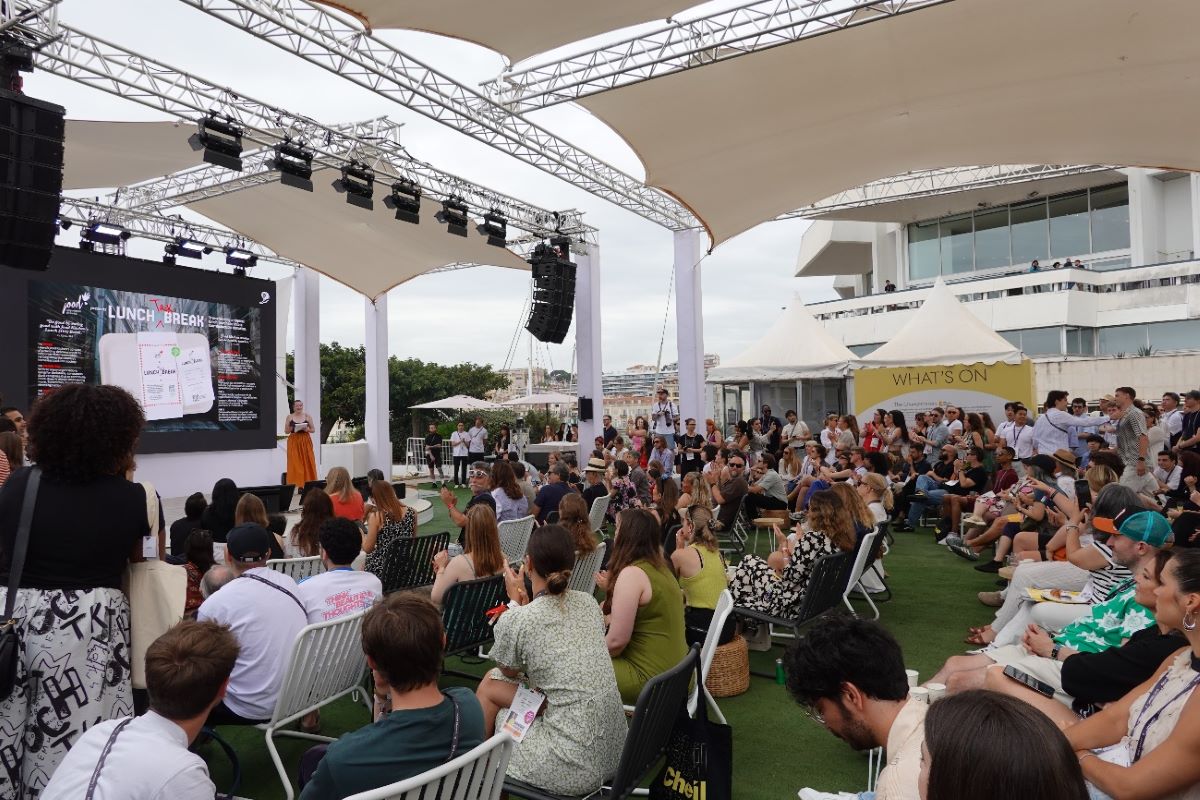
MORIKAWA: On the other hand, the presentation itself was a lot of fun. The atmosphere was really friendly, and I think we succeeded in winning over the jury members.
Actually, on the night we came up with the insight, we had great fun talking about our own past relationships as we worked away [laughs]. The two of us got to know each other through a guy who’s a friend of mine and Hinako’s ex-boyfriend. We decided we’d talk about this guy during our presentation. We brought him up as an example at the outset of the presentation. I said, “To me, he seemed like a really hard worker. He had genuine leadership qualities.” Hinako replied, “Well, he was certainly a great guy, but the fact is, he often felt insecure.” And that’s how our back-and-forth began. The jury members were so intrigued they chipped in themselves. “Yeah, yeah, know what you mean!” So we succeeded in getting the audience pretty excited.
KAWAI: One thing I noticed participating in the finals at Cannes was that the judges didn’t read the documentation submitted by the entrants that thoroughly. That meant that being able to present your idea in a compelling manner made a big difference to your score. It wasn’t so much a matter of memorizing all your lines beforehand or brushing up your English. What was more important was whether you could create a lively atmosphere and win over the jury’s hearts and minds. What they were looking for, I reckon, wasn’t the ability to communicate accurately so much as the ability to engage people.
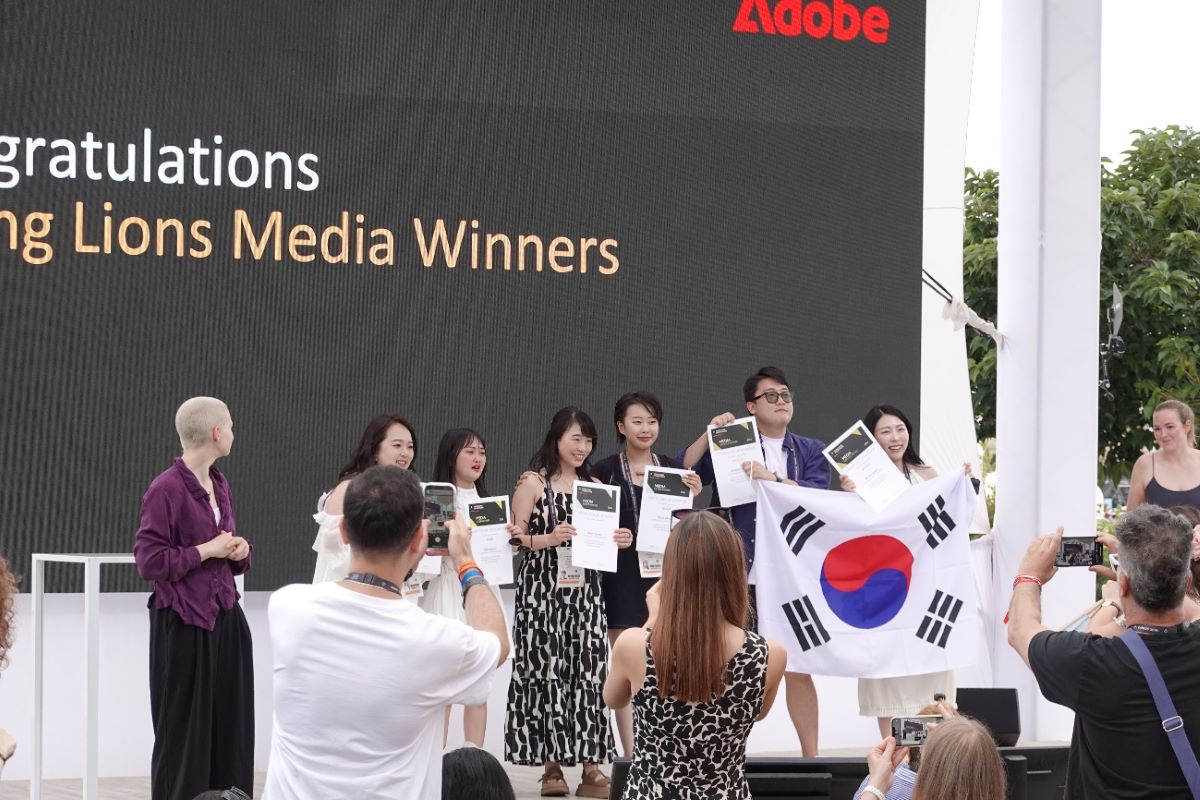
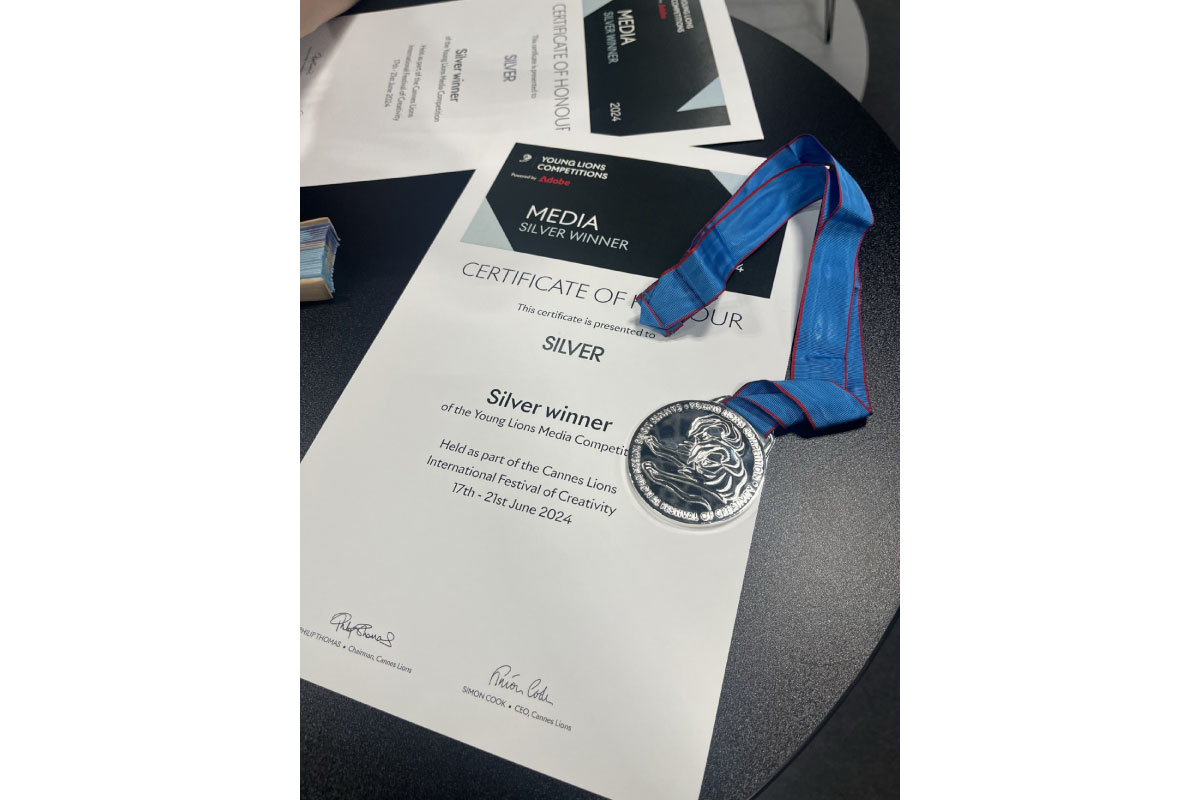
Developing the ability to think like world-class creatives
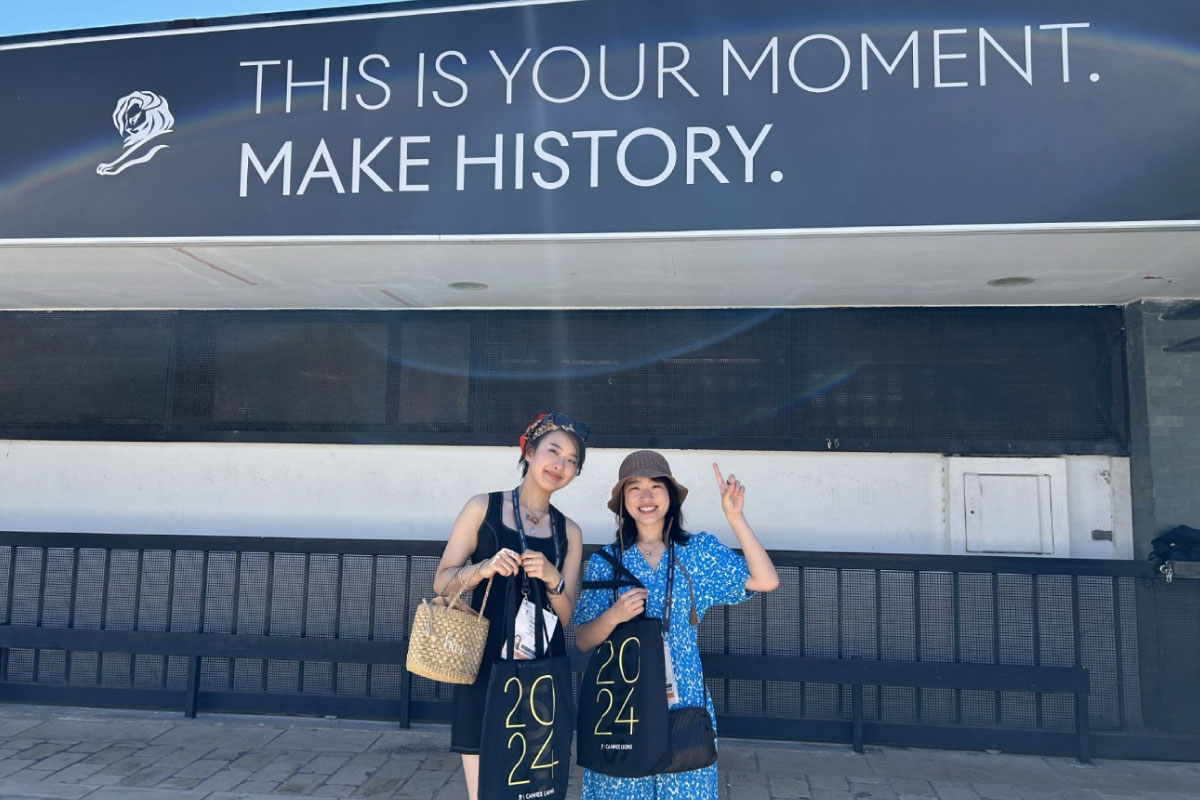
MORIKAWA: The support we got from the company was a big help. For starters, they provided a workspace for us, which was a huge plus. I think being stuck in a cramped hotel room would’ve been distracting and stifled our thinking. Also, Hakuhodo has lots of people on staff who have been to the Young Lions in the past. We reached out to many of these more experienced colleagues, and they gave us advice on matters major and minor, including how to compete successfully at Cannes and how to deconstruct an ad. That was really encouraging. Above all, Cannes basically involves working in pairs, and the two of us managed to come up with an approach that we were both happy with.
KAWAI: Another thing that really helped was that we’d been allowed to go on a tour of ADFEST, the advertising festival held in Thailand in March. There we got to experience firsthand what an international competition for young creatives is like. We also got to network with creatives from other countries, which was really inspiring.
MORIKAWA: As for what we gained from the experience, we learned what it takes to be world-class. What’s required to win accolades on the global stage? What insights are universal?
Plus, over the course of the entire experience, we managed to come up with our own methods for getting out of various scrapes. When we were stuck for ideas, we’d urge each other on or do something different for a change of pace. And when something irregular occurred at the last moment, we dealt with it on the spot. I figure we can put that experience to good use in team building on the job.
KAWAI: The experience also honed our creativity. We had to jump through lots of hoops to get to the finals, and we had to fire ourselves up on many an occasion and really get creative. Every round of the competition was like competing in a completely new setting. Doing that over and over, I believe, has really developed our ability to think like world-class creatives.
MORIKAWA: As for the future, my secret ambition is to make Japanese brands the talk of the world with the power of Japanese craft excellence. If I get another chance to compete on the world stage, I will certainly rise to the challenge. I intend to steadily build up my skills by gaining professional experience both in Japan and internationally.
KAWAI: My secret goal is to bring about diversity in Japan in the true sense of the term. This experience was a great opportunity to ask ourselves, “How do you take a difficult issue and translate it into terms that get people interested, thus turning it into a force for social change?” Going forward, I’d really love to help foster diversity by working on projects that are going to be implemented in the real world!


